18 fascinating facts about Slovenia, the country where one in 20 people keep bees
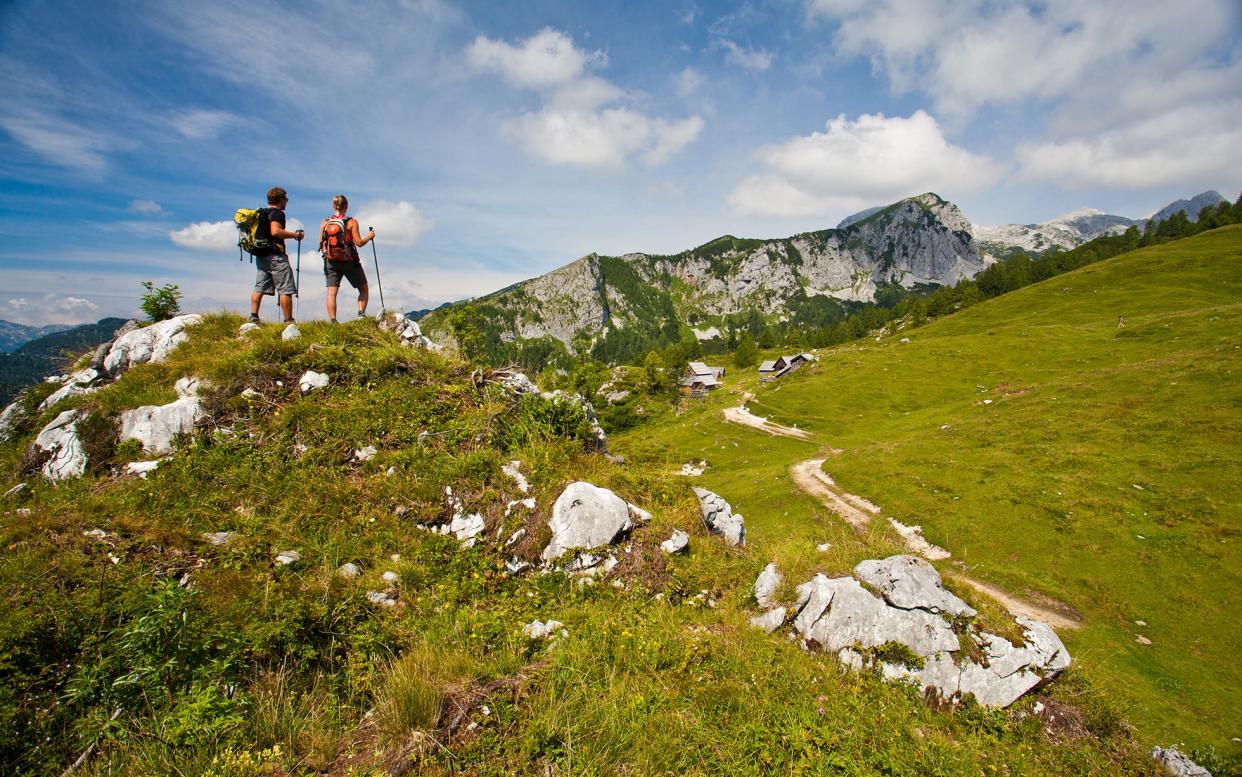
The England football team play host to Slovenia tonight – but we'll wager that most Britons watching the game are only vaguely familiar with the Eastern European country. So let us shed a little light...
1. They love bees
“Hives and honey are practically a religion in Slovenia – there are around 90,000 beekeepers in a population of just two million,” explains Chris Leadbeater. “Indeed, beekeeping is a prime part of the identity of a country that needs all the distinguishing characteristics it can grasp. It is, beyond its capital, a semi-forested realm, and bees thrive within it. It even has a distinct strain of the insect – Carniolan bees, which are valued for their non-aggressive nature and team ethic.”
2. It’s one of your 10 favourite European countries
Each year we ask readers to nominate their favourite cities and countries as part of the Telegraph Travel Awards. More than 70,000 had their say in 2016, and Slovenia was named the 10th best country in Europe (putting it ahead of Ireland, Denmark, Sweden, Switzerland and Turkey, to name a few).
3. They don’t like to quarrel
The annual Peace Index, “the world’s leading measure of national peacefulness”, puts Slovenia in seventh place out of 163 nations.
“The country's greatest single attribute is the Slovenes themselves: quietly conservative, deeply self-confident, remarkably broad-minded, especially tolerant and very, very hospitable,” says Telegraph Travel’s Slovenia expert, Steve Fallon. “So its ranking comes as no surprise.”
4. Its capital has a smaller population than Coventry
Just 278,853 called Ljubljana home.
5. But it has a fairy-tale castle
Chris Leadbeater writes: “Slovenia’s capital is a true box of delights – so small and picturesque that you start to wonder whether the locals have somehow concealed the uglier portions of the city. And it is topped by the medieval masterpiece which shapes its skyline. Initially built in the 11th and 12th centuries, and remodelled in the 15th, it has lost some of its fortress snarl – but it rewards those who make the walk upwards to sip a coffee in one of its pretty courtyards.”
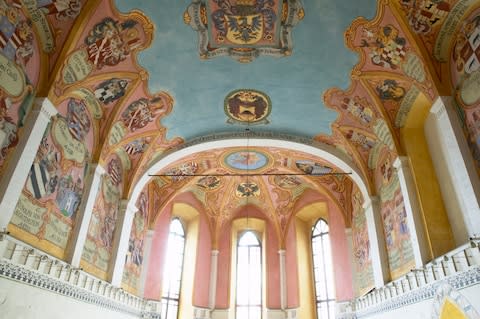
6. They like to dress up
To celebrate, or scare away, the end of winter, Slovenians wear traditional masks and costumes in a ritual - called Kurentovanje - which has been going on for more than 50 years.
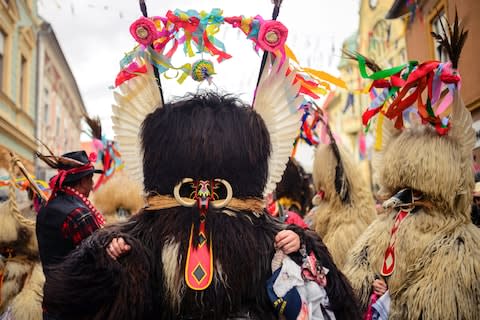
7. It’s home to Europe’s cheapest ski resort
The Post Office’s most recent study into skiing costs highlighted Kranjska Gora as the cheapest resort in Europe. The report compared the cost of equipment hire, lift passes, ski lesson and lunches for a family of four staying for six days. The total bill was £1,071 in Kranjska Gora, compared to more than £2,000 in Swiss resorts.
The 25 places in Eastern Europe you must see in your lifetime
8. And one of the world’s most beautiful lakes
Steve Fallon says of Lake Bled: “Mild thermal springs warm the water of this impossibly beautiful cobalt-blue lake to 26°C, making it a great place for a dip well into autumn: there are swimming areas on the northern and western shores. But what makes it even more special is the tiny, tear-shaped island toward the western side of the lake. On it you can visit a small museum and the lovely Church of the Assumption with some 14th-century fresco fragments and a gold baroque altar. If you need a special favour, ring the ‘wishing bell’ in the 15th-century church belfry and it will be granted.”
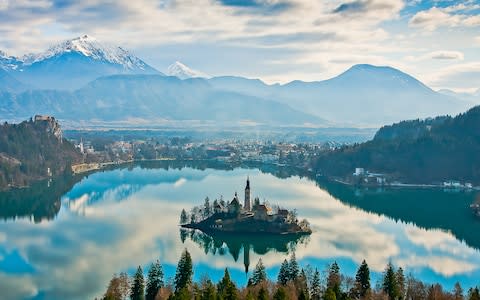
9. There’s a wonderful city you’ve never heard of
Maribor, that is. Anthony Gardner, writing for Telegraph Travel, explains: "They say there is only one month of the year when you shouldn't visit Maribor. In midwinter it has world-class skiing; in spring the Kurent Carnival takes place in nearby Ptuj; in summer the riverside Lent quarter is taken over by musicians and street performers; and in autumn the surrounding vineyards celebrate their harvest. November alone is considered too gloomy to bother with."
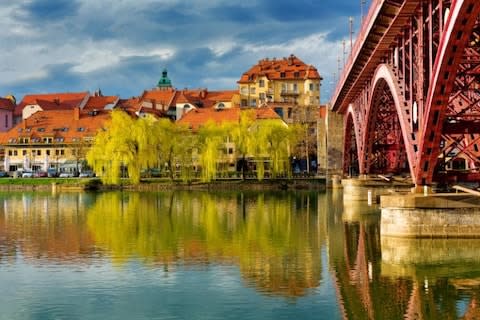
10. It’s one of the world’s most environmentally-friendly nations
The Environmental Performance Index (EPI), produced by the Yale Center for Environmental Law & Policy, is based on an assessment of the policies of 180 nations, reflecting whether they are meeting internationally established environmental targets or, in the absence of agreed targets, how they compare to one another. Slovenia performed admirably, with a rating of 88.98. Only four nations (Finland, Iceland, Sweden and Denmark) can better it.
11. More than half the country is protected
A remarkable 53.6 per cent of Slovenia is protected land, a higher percentage than any nation on Earth except Venezuela. Steve Fallon adds: “With more than half of its total area covered in forest, Slovenia really is one of the greenest countries in the world.”
12. There’s a haven for white-water rafting
A world away from the stillness of Lake Bled, and Slovenia’s pint-sized and picturesque capital, Ljubljana, is a region renowned for hiking and white-water rafting. Bovec, which straddles the Soča River, is the best base for the latter, while those keen on the former can attempt the hike to Mount Triglav, the country’s highest peak at 2,864m. “It appears on the nation’s flag and folk here don’t consider themselves true Slovenians until they scale it at least once,” explains Steve Fallon.
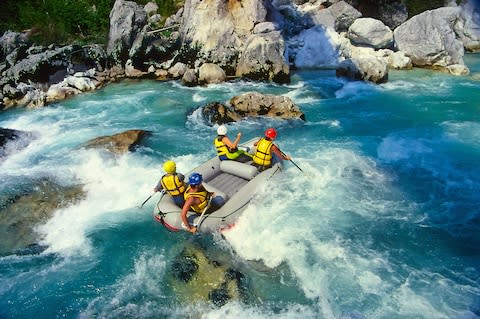
13. Residents are tall, old – and like to smoke and drink wine
OK, not all of them. But Slovenia is one of the 10 tallest countries on the planet (a typical male measures 1.803m) and one of the 10 most elderly (its residents are 43.5 years old, on average).
They are also the world’s sixth biggest smokers, and the sixth biggest consumers, per capita, of wine.
14. It goes deep underground
One of Slovenia’s four World Heritage Sites is Škocjan Caves, one of the largest underground canyons in the world and home to four miles of underground passages, vast chambers, and waterfalls. Postojna Cave, meanwhile, is the country’s most visited attraction. Its formations of stalagmites and stalactites are unrivalled anywhere and it is home to the endangered Proteus anguinus, a blind salamander known as “the human fish” because of its pinkish skin colour.
15. There’s a vineyard for every 70 people
Or so it is claimed. Nevertheless, Slovenian wine has long been tipped for great things. “The wide Vipava Valley, in the middle of Slovenia’s dry Karst region, produces some world-class red wines, including Merlot and its distinctive ruby Teran,” says Steve Fallon. “First-time visitors should head for Vinoteka Vipava, a tourist information centre and wine cellar with more than 100 wines to sample and staff to help you plan your itinerary.”
16. You can go to the beach
Slovenia has a tiny coastline - just 30 miles - but there is somewhere to swim. Portorož is Coney Island, Blackpool and Bondi Beach rolled into one.
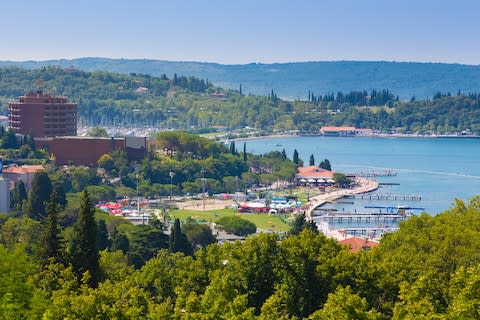
17. Or sleep in a prison
Hostel Celica in Ljubljana occupies a converted jail. You’ll be allowed to check out, however.
At a glance | Tourist arrivals to Slovenia
18. They invented the wheel
Sort of. The Ljubljana Marshes Wheel is the oldest ever found. Radiocarbon dating puts its age at 5,150 years.

